How to grow chervil in New Zealand
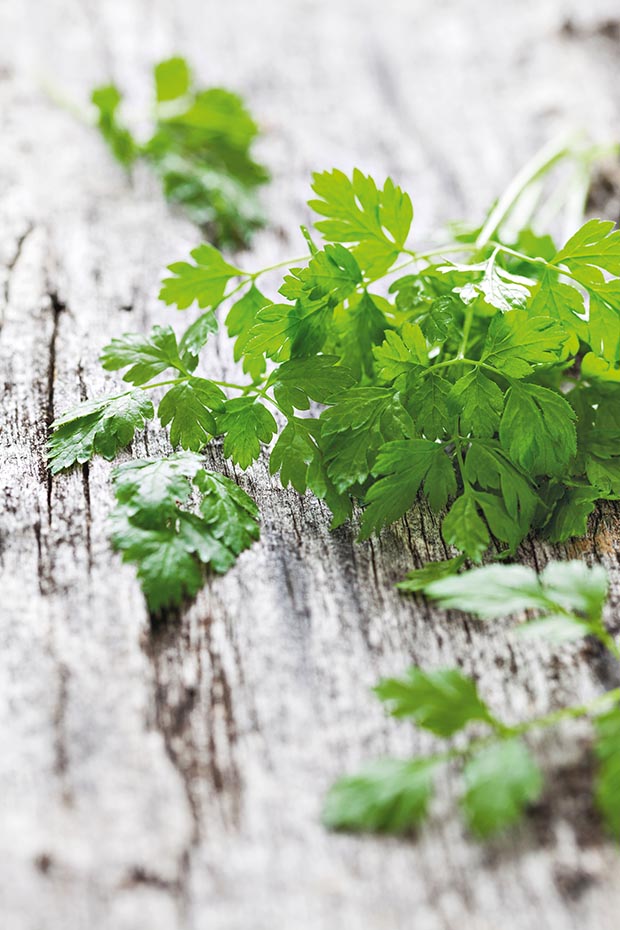
It can be temperamental to grow and very subtle to taste, but this is one French herb that’s well worth adding to your garden.
Words: Jenny Somervell
My husband first spotted chervil in our garden on an evening walk-about. He has an eye for anything new and pounced upon the clump of fine, parsley-like foliage hiding under the apple trees.
“What’s this?” he said accusingly. “You never told me those were there!”
Of course not. I had been hoping to keep them hidden until they had a bit more stamina as I feared they would not survive the vicious scissor attacks he inflicts when he’s on the hunt for herbs.
It was too bad and too late for the chervil, which soon looked like the lawnmower had been over them.
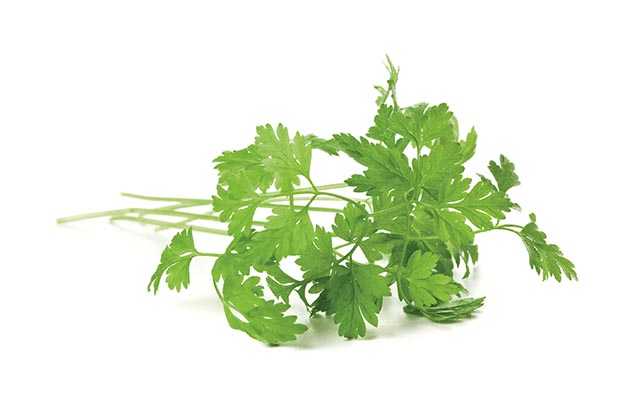
The french herb chervil is worth adding to your garden.
Chervil is harvested by the handful and used liberally by discerning cooks. It’s an indispensable herb in French cooking, a key ingredient of the French ‘fines herbes’ (along with parsley, chives and tarragon). It is described as tasting like ‘fine anise with a hint of black pepper’ or ‘parsley-like with a hint of myrrh’ and is what gives Béarnaise sauce its distinctive taste.
But you won’t find chervil in your supermarket. Its soft leaves perish quickly after picking so a home-grown patch is the only way you’ll get your hands on this cooking treasure.
Third time lucky I would like to say my patch was a carefully planned planting but it was at least my third attempt. When I grew chervil in full sun it got sunburnt, turned pink, then promptly bolted. In wet clay soils it rotted, and the tap-rooted transplants quickly ran to seed.
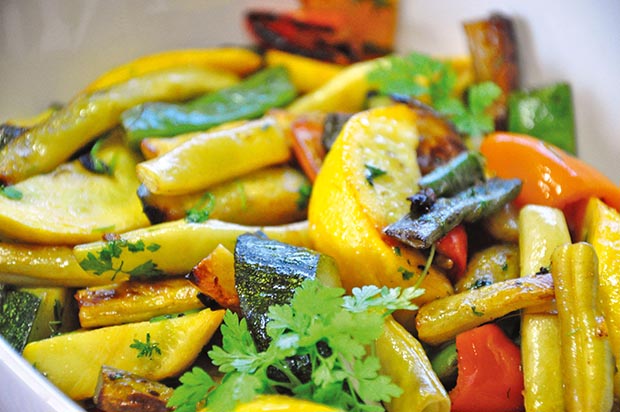
Stir-fried veges sprinkled with chervil.
In the end, chervil decided where it wanted to be, which is rather typical. It chose a moist, well-drained but rather weedy garden bed in light shade under our apple trees. This is also the lowest point in the garden where the irrigation runoff drains through.
Chervil has self-seeded happily there for three years now. As the temperature lowers in February, the tiny fern-like seedlings spring up, often in great abundance. I simply thin them and spread compost mulch around them to keep them growing strongly. I’ve tried transplanting them with little success; they wilt rather horribly and bolt early.
I always let a few strong plants go to seed. The fern-like, lacy foliage is attractive, but the unexpected bonus are the umbels of tiny white flowers which brighten this shady corner. If you have a little imagination, they resemble sprinkles of white fairy dust in the twilight.
It puzzled me why my husband liked this understated herb so much. Anyone who knows him would say that subtlety is not his strong point. Some of his culinary creations are intense!
However regarding the scissor attacks, it appears my over-protective instincts weren’t needed. The chervil wasn’t too intimidated by his first razor cuts and recovered just fine to produce an even more abundant crop of leaves. But the cook’s zeal soon outstripped supply and more chervil sowings were needed.
My advice is to get ahead of the cook! Plan several patches to sequence sowings and sow again when the first batch is pickable. Grow chervil lavishly! Your friends and family will be impressed with this chic little French number plucked effortlessly from your own back yard.
WARNING
Chervil can be confused with the deadly hemlock (pictured below) – never harvest from the wild and always ensure seed is sourced correctly.
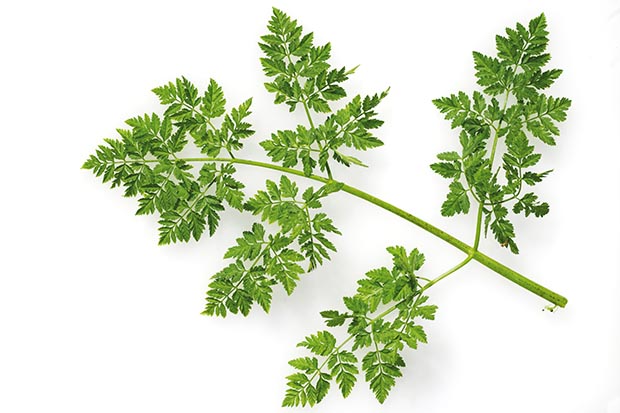
Hemlock.
HOW TO SUCCESSFULLY GROW CHERVIL
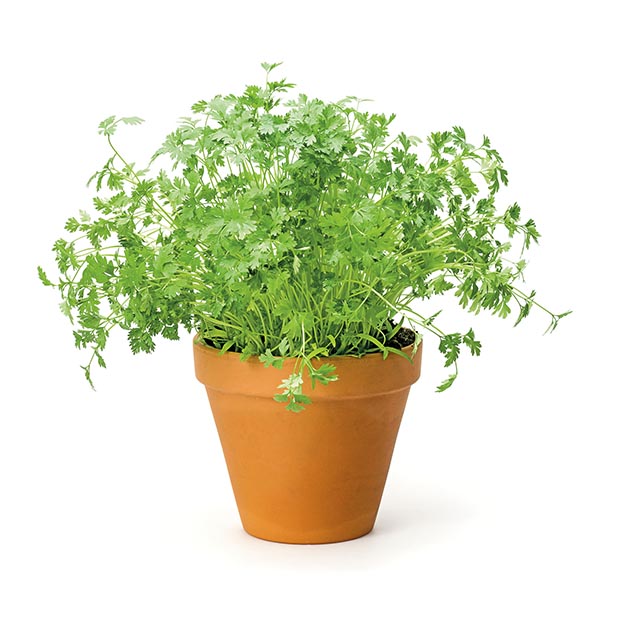
Once chervil finds a happy place, it’s easy to grow.
Chervil is a member of the Apiaceae family (formally Umbelliferae, after their umbrella-shaped flower heads) and its relatives include parsley, caraway, coriander, dill and carrot.
It is a biennial herb, but is usually grown as an annual. It prefers cool temperate climates, or either side of summer in hotter climates provided there is moisture and shade.
It can be either plain-leaved or curly, but the curly type is the one usually available in catalogues.
Chervil is easy to grow once you sort out its requirements, but too much sun and heat means it will quickly run to seed.
WHEN TO SOW
• In cooler frosty climates, sow from early spring until late autumn.
• In mild but not hot areas, sow year-round.
• In very warm to hot areas (eg Northland), sow late summer and autumn for harvest in winter and spring.
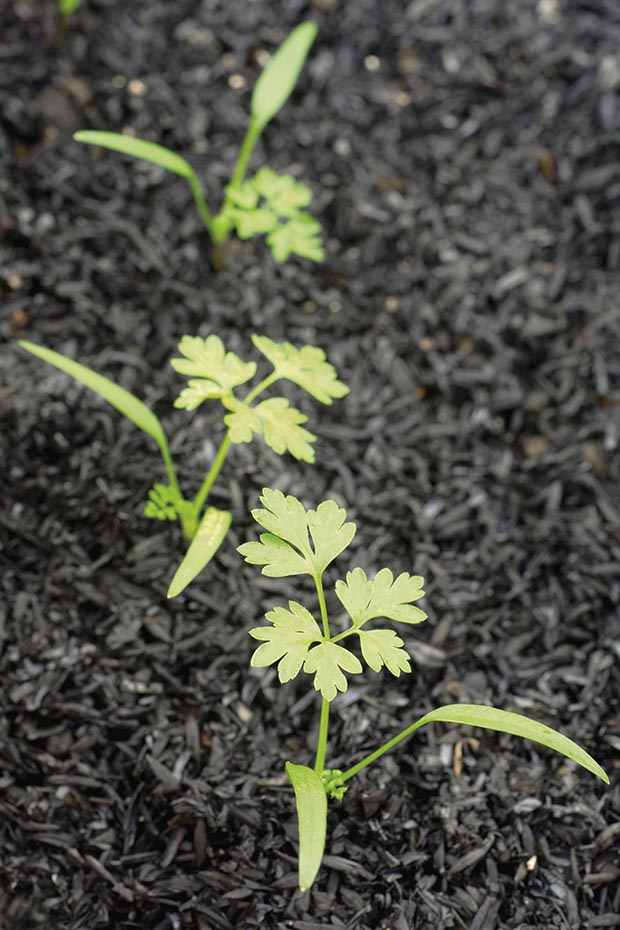
Remove any flower stems during the harvest period.
HOW TO GROW
• Site winter crops in full sun, and summer sowings in dappled or half-shade (but not full shade). Under deciduous trees works well.
• Sow directly into in a well-drained, light soil, rich in compost.
• Use fresh seed only. Do not cover as seeds need light to germinate. Press lightly into soil or sow in a furrow about 2cm deep.
• Germination is slow – keep seedbeds moist with fine watering for 7-21 days.
• Drying out causes poor flavour and bolting so keep the growing plants moist especially in hot periods – mulching will help conserve moisture and keep temperatures even.
• Once seedlings are 4-6cm high thin to 15-20cm apart.
• In frosty areas, a greenhouse or cloches can improve productivity.
HOW TO HARVEST
• Start picking when plants are just 10 cm high – pick just before use as they wilt quickly.
• Snip leaves (rather than pulling) and harvest from the outside so the inner leaves can replenish the plants.
• Remove any flower stems during the harvest period.
• Regular picking will keep plants growing fresh new leaves.
3 WAYS TO GET THE BEST OUT OF CHERVIL IN YOUR COOKING
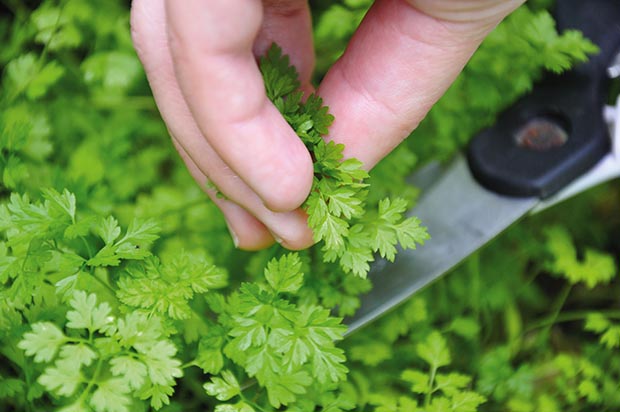
Snipping sprigs for garnish.
Chervil’s flavour is warm, delicate, slightly sweet and aniseedy, and never harsh or overwhelming. It has a smaller amount of estragole than tarragon, the compound giving the latter its strong scent and flavour.
• Chervil enhances the flavour of other herbs which is why it is an indispensable ingredient of the French-inspired fines herbes, along with parsley, chives and tarragon.
• It shines with rather bland flavours such as in an egg omelette, with steamed vegetables, chopped over baked potato with olive oil and sea salt, or sprinkled over sautéed scallops.
• It is part of the classic French ‘sauce chivry’, a white sauce made with herbs and white wine. A chivry butter can be made with chopped parsley, chervil, chives, tarragon and salad burnet (if available), mashed with butter then refrigerated (or frozen) for a mouth-watering addition to hot veges, roast chicken or baked fish, or for flavouring white sauces.
COOKING TIPS
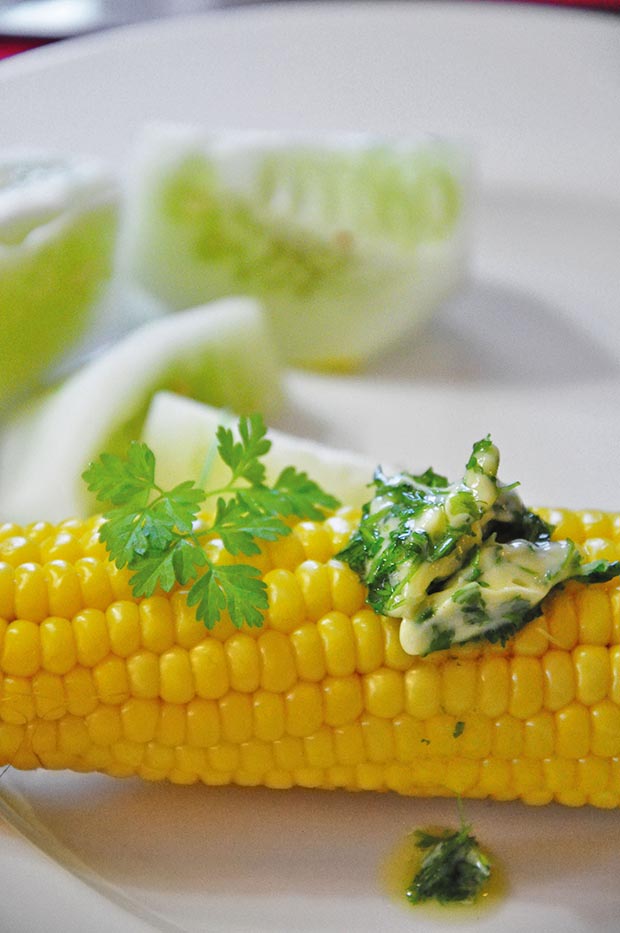
Corn with chervil butter.
• This light herb is ideal for delicate-flavoured dishes.
• Always use chervil fresh and raw as cooking destroys the delicate flavour and scent, or add to cooked dishes in the moment just before serving.
• Use the tiny sprigs in salads and as a garnish.
• It is delicious chopped and mixed with semi-soft butter and added over hot cooked veges like asparagus, beans, aubergines, tomatoes, spinach, corn and potatoes.
• Chop into vinaigrette dressings.
• Make chervil butter and chivry and freeze in small blocks for use up to two months.
• Add chopped to omelettes just as the egg sets.
• Scissor over cream soups at the last minute before serving.
• Chop and use raw in all kinds of salads.
• Make chervil vinegar for use in sauces and vinaigrette.
• Bake fish in coconut or evaporated milk with a couple of tablespoons of lemon or lime juice, then season with sea salt, black pepper, ground roasted coriander seed and chopped chervil.
• Use generously – it is hard to overdo it!
Recipe: Chervil Dressing
INGREDIENTS
Large handful of chervil leaves, roughly scissored
4-5 chive leaves, scissored
3 tbsp white wine vinegar
1 tbsp lemon juice
1/3 cup of mild-tasting olive oil
black pepper
¼ tsp salt
½ tsp sugar
METHOD
Combine ingredients in a bowl and whisk to blend. Add to salad or blanched vegetables – courgettes and carrots work well.
Love this story? Subscribe now!
 This article first appeared in NZ Lifestyle Block Magazine.
This article first appeared in NZ Lifestyle Block Magazine.

